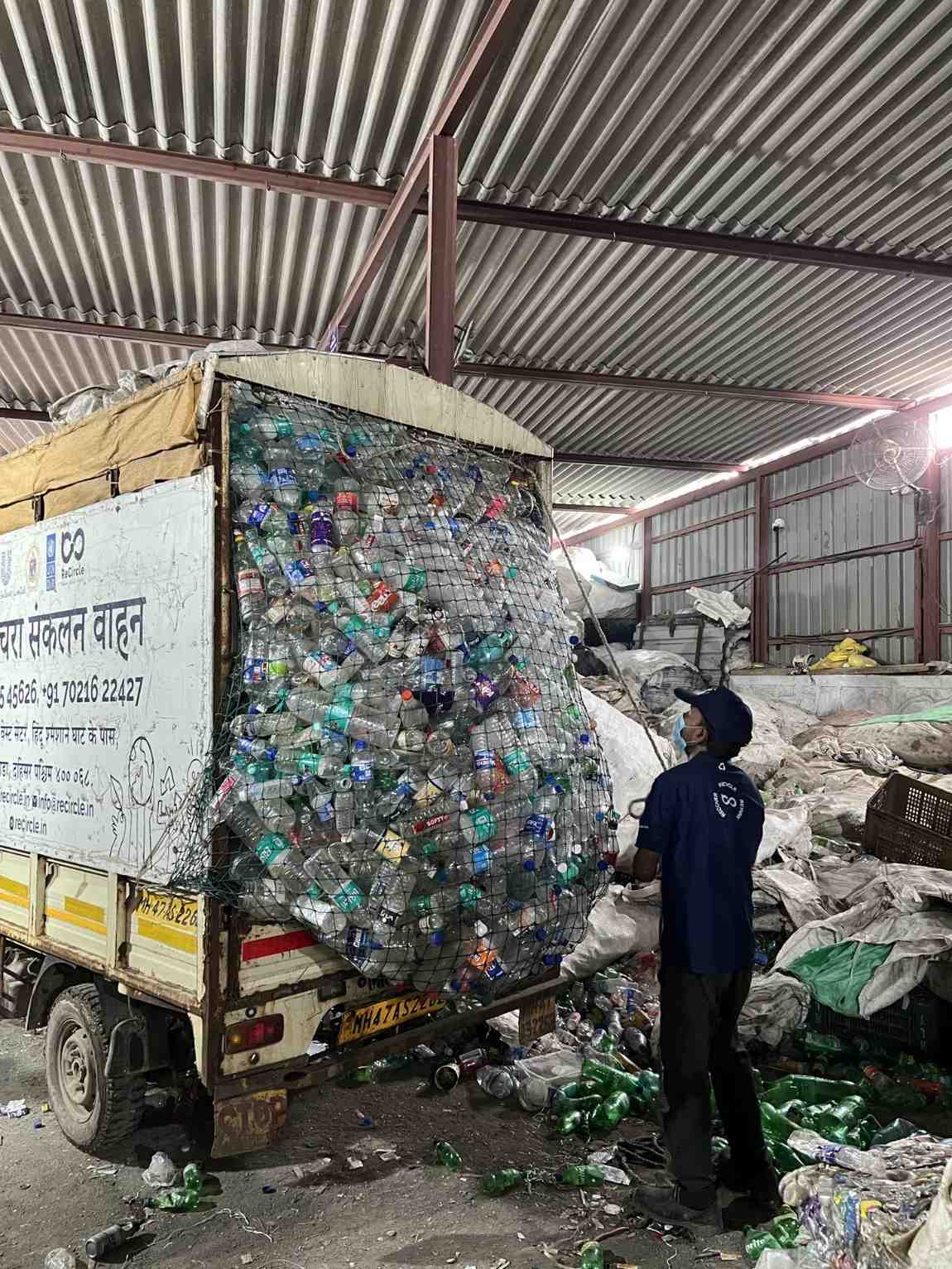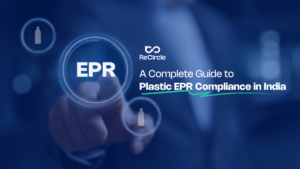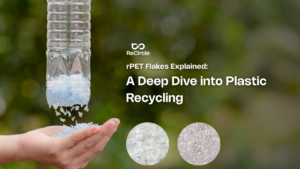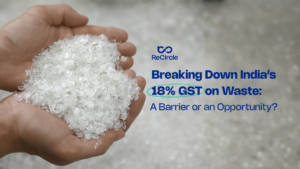On a Sunday morning in Mumbai, you finish your chai, crumple the milk packet, and toss it into the bin. It joins yesterday’s biscuit wrappers, today’s vegetable peels, and a random charger cable that gave up on you mid-week. Out of sight, out of mind.
Except nothing you throw away actually, or I mean truly disappears.
In India, most of this actually ends up on an ever-growing mountain of waste like the one at Deonar Dumping Ground in Mumbai, India’s oldest and one of its largest landfills. It has been piling up since 1927, towering over neighbourhoods and smouldering with toxic fumes. We are literally building skyscrapers of garbage, right in the heart of our cities.
If that mental picture feels heavy, here’s the good news. There is another way to run the world. A system where waste is not an afterthought, but a resource. Where your discarded milk packet could find its way back as a school bench, a backpack, or even a road.
That system is called the circular economy, and once you understand it, you will start noticing waste differently , maybe even valuing it.
So, What exactly is the Circular Economy?
Picture our current system as a straight road. We take resources from the Earth, make products, use them, and then dump them. It is a one-way street that ends in a landfill.
The circular economy replaces that with a loop. Instead of making, using, and dumping, we make, use, and then cycle materials back into the system so they can be used again and again.
Think of it like this: if the linear economy is like single-use plastic, the circular economy is like your nani’s steel dabba. It lasts, it is reused endlessly, and it never really becomes “waste”.
Why Should You Care?
Because waste is not just an environmental problem, it is a lifestyle problem.
Ever wondered why onions get expensive overnight? Why are certain gadgets always “out of stock”? Why your city floods with just two hours of rain? It is all connected to how we use and discard resources.
The circular economy can:
- Keep prices stable by reducing dependence on imported raw materials.
- Reduce flooding by stopping plastic from choking drains.
- Create jobs in recycling, repair, and innovation.
- Cut greenhouse gases that fuel climate change.
This is not just about “saving the planet”. It is about making daily life more livable, affordable, and fair.
How It Works – The Lifestyle Version
Instead of showing you a complicated chart, let’s walk through a day in a circular economy future in India.
Morning
You wake up and pour milk from a glass bottle that you will return to the shop. Your toothbrush is made from recycled plastic, and when it wears out, you will drop it into a bin that ensures it becomes another product.
Afternoon
You order lunch in a steel tiffin that is collected, washed, and reused. Your clothes are made from upcycled fabrics, maybe even old PET bottles.
Evening
You plug your phone into a refurbished charger. The e-waste from dead chargers has been harvested for copper and rare earth metals instead of lying in a dump.
Nothing “disappears”, it moves from one form to another.
India’s Secret Advantage
Here is something the world often forgets. India has always been closer to a circular economy mindset than the West.
Your old jeans became a pocha. Glass bottles were sent back to the doodhwala. Newspapers were sold to the raddiwala who resold them to chai stalls for wrapping. We were upcycling before the word existed.
What changed was the scale and complexity of our waste. We shifted to single-use plastics, fast fashion, and quick-discard electronics , without building systems to cycle them back.
The Problem We Need to Solve
India generates 62 million tonnes of waste every year. A large chunk of it never sees a recycling facility. Why?
- Segregation is missing – Wet and dry waste get mixed, making recovery harder.
- Informal workers lack support – Waste pickers do most of our recycling, but without fair pay, safety, or recognition.
- Businesses still use virgin materials – Because it is cheaper than recycled ones, for now.
The result? Landfills overflow, oceans fill with plastic, and resources keep getting extracted from the Earth.
The Role of Technology
Modern circular economy systems are powered by tech. Imagine being able to scan a packet and instantly know which bin it goes in, where it will be recycled, and what it will become next.
Companies are using:
- Blockchain to make waste traceable.
- AI sorting machines to separate materials more accurately.
- Data platforms to connect waste generators, collectors, and processors.
In India, this is not just theory, it is already happening. But while these innovations are promising, the scale is still far smaller than what’s needed to meaningfully tackle the waste crisis. Without wider adoption, even the smartest tech will fall short against the mountain-sized challenge we face.
How Businesses Can Join the Loop
If you are running a business, here is what adopting a circular economy mindset could look like:
- Design for longevity – Make products that last longer and can be repaired.
- Offer take-back programs – Let customers return old products for recycling or refurbishment.
- Switch to recycled inputs – Source raw materials from recyclers.
- Educate customers – Tell them how to dispose of products responsibly.
When businesses close the loop, they save money, build brand loyalty, and stay ahead of regulations.
And What About Individuals Like You and Me?
The circular economy is not a spectator sport. As consumers, we can:
- Choose brands that take responsibility for their waste.
- Repair instead of replace.
- Segregate waste at home.
- Support businesses and startups that are circular by design.
The truth? Every single product you touch has a waste story. The more you care about that story, the faster the system changes.
A Real-World Indian Example – ReCircle
ReCircle, an India-based clean-tech and circular economy startup that is quietly transforming how waste is handled.
They started in 2015 as RaddiConnect, helping households and offices connect with recyclers. Today, they run a tech-driven network that:
- Tracks waste in real time through their proprietary tech platform, ClimaOne.
- Enables brands to meet their Extended Producer Responsibility (EPR) targets.
- Empowers homegrown brands to neutralise their plastic footprint through voluntary plastic credits.
- Collects all sorts of dry waste, including e-waste, metal, garments and footwear.
- Works with and uplifts Safai Saathis, through formalisation, access to PPE Kits, Government schemes, fair wages, healthcare and job security.
They are not just moving waste out of sight. They are proving that in India, the circular economy can be ethical, scalable, and profitable.
Why This Matters Right Now
Climate change is no longer a faraway concept. It is in our floods, our heatwaves, our crop failures. If India keeps growing in a linear model, the environmental and economic costs will hit every part of daily life.
The circular economy is not a silver bullet, but it is one of the few models that aligns environmental health with economic growth. It is a win-win we cannot afford to ignore.
Conclusion
So, if you are a business leader, policymaker, or simply a citizen who cares about the future, this is the moment to join the loop.
Partner with ReCircle to make your waste traceable, ethical, and impactful. And whether you want to offset your plastic use, host a zero-waste event, or comply with EPR rules, they have the tech and network to get it done.
Just remember that waste is only waste if we waste it. Let’s make sure we do not.




